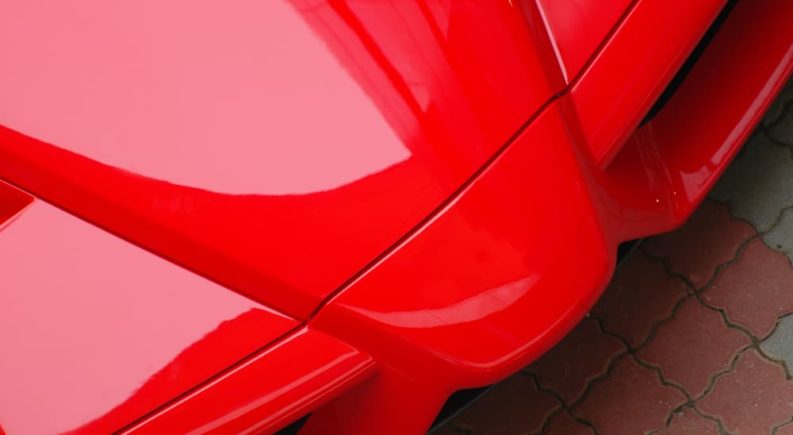There’s an auction that took place on November 5th, 2022, hosted by an organization by the name of RM Sotheby’s. This wing of the world-renowned Sotheby’s Auction House organization took over Marlborough House in London, England, to auction off one of the most spectacular automobile collections that one could actually shake a stick at. The 18 cars of the so-called Gran Turismo collection, gathered together by a single owner over 25 years, sold for an average of over £1.4 million each, and for good reason––the collection is so exquisite that its Ferrari 550 Barchetta Pininfarina looks like a daily driver by comparison to the rest.
The collection includes a trio of some of the most significant Group B racing chassis ever built, iconic supercars from Lamborghini, Jaguar, and Bugatti, and a set of five Ferrari halo cars that might be the most valuable quintet ever assembled for the significance they lend each other. I can’t simply gloss over it all and sum it up in one go. These vehicles deserve to be known, and what better model to start with than the 2003 Ferrari Enzo?
Creating an Icon
The Ferrari Enzo, named after the company’s legendary founder, is the epitome of everything Enzo Ferrari could have dreamed of producing. Ferrari’s core values, distilled to their essence and applied with relentless dedication, produced a supercar with a wonderfully artistic yet functional form, a completely stripped-down interior, and a record-setting naturally-aspirated V12 engine that continues to sire new variants to this day.
It was fitting to develop the supercar that would pay tribute to the founder during Ferrari’s most prolific stretch of F1 dominance in the Michael Schumacher era. Ferrari applied lessons from all aspects of its business to the process and brought the best track and road technology together to make an all-time-great road car. This effort introduced so many cutting-edge technologies that, in many ways, the Ferrari Enzo is a grandfather to the modern supercar segment, and out-performing it remains a coming-of-age challenge for new designs.
By the Numbers
Let’s take a minute and appreciate just how damn good this thing is as a performance car. When the 3010-lb Enzo first hit the Nordschleife in 2008 and set a time of 7:25.21, it was the third-fastest road car––behind only the Radical SR8 and the Donkervoort D8 RS, hardly your typical roadgoing supercars. More impressively, that was five years after the Enzo came out! If it had been sent to the ‘Ring right away, Ferrari would have snatched the record from the Porsche Carrera GT by nearly three seconds!
Enabled by a wind tunnel-crafted F1-inspired form (the nose cone is a dead giveaway) and using state-of-the-art active aerodynamic elements to avoid using an unsightly wing, the Enzo’s propensity for speed remains significant to this day. Despite setting that Nurburgring time nearly 15 years ago, it ranks as the 52nd-fastest production car at the legendary circuit (and the time remains the third-fastest for a Ferrari). Its straight-line top speed, in the neighborhood of 220 mph, would still rank it among the 100 fastest production cars ever built, and its official 3.65 s launch from 0-100 km/h is a top-100 score as well (and a top 10 among Ferraris).
I admit that I feel like I’m rattling off numbers and dubious rankings to you. I generally prefer to avoid that to focus on the story of the car, but in the Enzo’s case, a significant part of the story lies in how many of the performance numbers remain relevant today. The raw quickness, sheer speed, and shocking handling characteristics of the Enzo make this 20-year-old car a stout competitor to many new supercars! But the numbers are only part of the reason why the Enzo Ferrari is such a special car.
Dreams of a Generation
Ferrari’s penchant for building timelessly beautiful sports cars, from swooping curves to minimalist wedges, took an entirely new turn with the Enzo. The earlier F50 showed signs of what was to come, with its massive hood vents, large side scoops, and narrow rear glass, but I’m not sure anything could have prepared the automotive world for what we got with the Enzo. Its appearance from the front is like an F-14 fighter jet, with a nose cone sticking over four feet ahead of the front axle, just like the Schumacher F1 race car.
The side scoops––and equally large brake vents behind the front wheels–are so large as to make it appear that the doors were meant to be several inches farther out. The rear roofline deviates from the fastback-like script of its three significant predecessors by terminating above the rear axle. The smoothly arched fenders naturally carry the eye from this point to the very rear of the car, where the taillights are half carved out of the gently rounded rear fascia––it’s unmistakably Ferrari, and yet unlike any Ferrari to precede it.
The sum of the parts was a love-it-or-hate-it affair, but to those who loved it, the Enzo was the coolest car in the world. There I was, hitting the absolute zenith of my obsession with Hot Wheels cars, looking at what was unmistakably a real-life Hot Wheels car in pictures spread out on my bed. I had no idea just how special this car was, but I didn’t need to because it had already captured my imagination like nothing else could. The Bugatti Veyron, with its record speed, massive power, and unfathomable price tag, was second place to the Pininfarina-designed Rossa Corsa Enzo and its wonderfully evocative shape.
Chassis #132659
My choice for this next subheading rolls off the tongue like a line from Les Mis, and what for? Well, that’s the chassis number of the Ferrari Enzo that was up for grabs on November 5th. Part of the beauty I find in auction cars is that each one really does have its own story to tell, and this one is no exception. One of only 399 Ferrari Enzos, which were sold by invitation only (an unusual tactic that sparked a continuing trend in the world of ultra-exclusive production runs), the lucky buyer picked it up in Maranello in June 2003 and promptly did the last thing anybody would have expected of them.
They drove it home.
Rather than stuff this immaculate vehicle onto a trailer for immediate storage until such a time as now, the owner put over 6,000 miles on the car in the first three months! Chassis # 132659 is one of the few Enzo Ferraris that has truly lived, evidently serving as a near-daily driver (or frequent joyride partner) for much of its first decade. It survived an accident in its first year but was repaired at the Ferrari factory, and by 2012, it had racked up over 32,000 miles.
Despite the car’s extensive use, the first and only owner clearly cared for it and spared no expense to keep it in good condition. Over £42,000 have gone into preventative and proactive maintenance. The suspension has been rebuilt, all fluids refreshed, custom components designed, built, and installed, and even the interior plastics have been refurbished to keep this well-used Enzo looking and performing as good as new.
Though Chassis #132659 saw less use as the Gran Turismo collection grew, it clearly remained a favorite of its owner––today, it has nearly 45,000 miles on it. The mileage goes to show that it never collected dust at the back of the garage. Despite all this wear and tear, when this car was placed up for auction, it sold for a cool £1,917,500, showing that some things need not be perfect to be priceless.
The Enzo That Lived
It just tickles me to know that Chassis #132659, a resident of England for the past 20 years, has been out and about all this time. A car that cost around $700,000 new, at a time when $100,000 could buy you a house! It might sound crazy to “rational” or “fiscally responsible” adults, but as someone who can only dream of ever even seeing one, to know that at least one driver was driving an Enzo every day warms my heart.
Sadly, for one reason or another, the lovingly assembled Gran Turismo collection is no more. But the cars and their stories live on––the auction is just a perfect excuse to retell them. Ferrari Enzo, Chassis #132659, has been living in rarefied company, but although it’s not the rarest, fastest, oldest, most expensive, or best-preserved example of the lot, it just might be the greatest of them all.
For what it meant when it was new.
For its continued relevance today.
For the fact that it lived.




